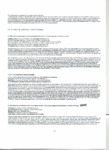Use este identificador para citar ou linkar para este item:
http://www.alice.cnptia.embrapa.br/alice/handle/doc/17602| Título: | Mapping of Fractional Forest Cover in Rondonia, Brazil with a Combination of Terra MODIS and Landsat TM Images. |
| Autoria: | LU, D.  BATISTELLA, M.   ALVES, D. HETRICK, S.   MORAN, E.   |
| Afiliação: | Dengsheng Lu ( Auburn University); Mateus Batistellla ( Embrapa Monitoramento por Satélite); Diógenes Alves ( INPE) Scott Hetrick (Indiana University); Emílio Moran ( Indiana University). |
| Ano de publicação: | 2007 |
| Referência: | In: LBA_ECO Science Team Meeting, 11., 2007, Salvador. Resumos... Salvador: LBA, 2007. |
| Páginas: | p. 31-32. |
| Conteúdo: | High deforstation rates in Amazonia have motivated considerable efforts to monitor land-cover changes based on satellite images and image porcesssing techniques. Most commonly, MODIS images are used to provide low-cost region-wide coverage at nearly monthly frequencies, but they offer offer only coarse resolution, Lsndsat TM has been used in a majority of studies for nearly two decades, but these, but these data are expensive, and provide, at best, yearly coverage because of clouds. Here, a new approach to estimate forest change is proposed based on the integration of TM and MODIS images. TM images are processed using a hybrid approach including spectral mixture, expert rules, and usupervised classification, to generate a reference forest image. Three fraction images are derived from MODIS surface reflectance data; expert rules are used to generate a refined vegetation image and regression is then develoned between the TM-derived forest and MODIS derived vegetation data to assess the fractional forest area. This approach was initially applied to 2004 MODIS and TM images from Rondônia, and the regression model was transferred to 2000 and 2006 MODIS images. A similar exercise was made in Pará state for the estimation of forest area in 2005. Compared to TM-derived reference data in Rondônia, the system error for the MODIS-derived forest areas was 1.56% and 4.19% for 2004 and 2000 images, respectively. Compared to INPE prodes data, the error for total forest area in Rondônia in 2004 a 2000 are -0.97% and 0.81%, respectively. The major advantage of this approach is that coarse spatial resolution images from MODIS and AVHRR can be used to estimate fractional forest cover for large areas in a short time, requiring limited work, but yielding accuracies comparable to Landsat TM-derived results. |
| Thesagro: | Terra |
| NAL Thesaurus: | Amazonia |
| Palavras-chave: | MODIS images forest Rondônia |
| Tipo do material: | Resumo em anais e proceedings |
| Acesso: | openAccess |
| Aparece nas coleções: | Resumo em anais de congresso (CNPM)  |
Arquivos associados a este item:
| Arquivo | Descrição | Tamanho | Formato | |
|---|---|---|---|---|
| 2063.pdf | 1,21 MB | Adobe PDF |  Visualizar/Abrir |









